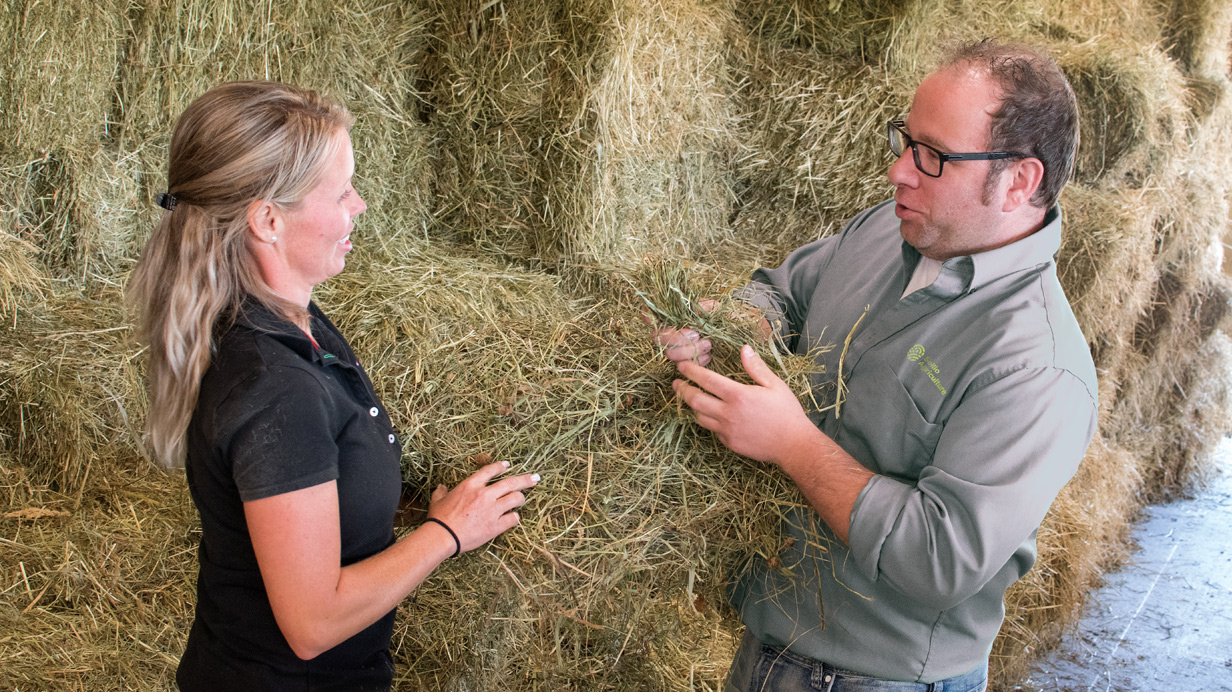How to choose the best hay for your horse
Hay is an important part of a horse’s diet. That’s why it’s important for all horse owners to know how to choose the right type of hay for their horses’ needs.
Composition
It’s important to remember that forages are not all the same. Their digestibility, nutritional value and voluntary intake vary greatly depending on their composition, maturity and the quality of the harvest and storage conditions.
Hay is an important source of fibre and consists of forage crops from the grass and legumes families. The most common grasses in Canada are:
Timothy (or millet)
Bromegrass
Ryegrass
Bluegrass
Orchardgrass
The most common legumes hay are alfalfa and some types of clover.
Grass hay is generally the most popular for horses because it meets their nutritional needs, is palatable and is easier to dry. Alfalfa is often included in a grass mixture or added to some horses’ rations as it is higher in protein and calcium.
Maturity
The quality of hay varies according to the maturity of the crop. A crop harvested at an earlier stage of development will be easier to digest and higher in nutritional value, whereas more mature hay will have stiff, rigid stalks, indicating lower digestibility. Horses will tend to waste this type of hay. Although a sensory assessment of hay provides valuable clues to its quality, a laboratory analysis is the best way to obtain accurate information on its nutritional value.
Harvest and storage
Weather conditions at harvest time affect the nutritional value and storage quality of hay. Hay that is harvested too wet tends to heat up. This encourages the development of mould and fungi that produce dust, which makes the hay less palatable and can cause lung problems in horses.
Preservatives
Some preservatives, such as propionic acid, can be applied when the crop is baled to prevent the growth of mould. They stop mould from growing at harvest until the moisture content is reduced to the desired level. Recognized preservatives are safe for horses. They improve the quality of the hay by reducing spoilage.
Weeds
Soil quality, crop maintenance and weather conditions all affect the presence of weeds. Hay from an old, poorly maintained field is likely to contain more weeds than hay from well-drained land that has been seeded and fertilized year after year. Some weeds, such as quackgrass, are fairly well tolerated by horses and do not cause much inconvenience other than reduced nutritional value. However, other weeds should be avoided as some may be toxic or affect the palatability or drying of the hay.
A hay for every horse
Every horse has different needs. Therefore, the best hay for one horse is not necessarily the best hay for another. The table below gives an overview of the types of hay to feed a horse based on its physiological stage, level of training or condition.


